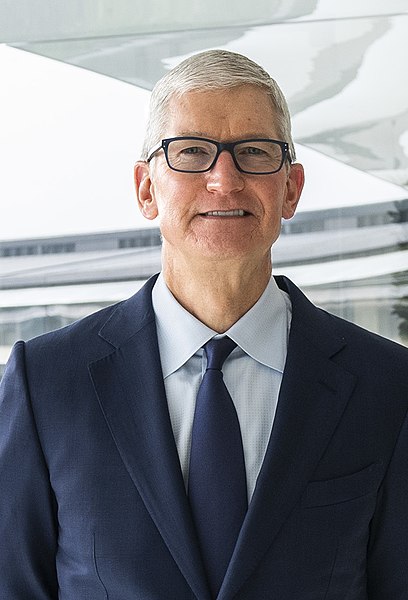The Art of Effective Leadership: Strategies, Challenges, and Tips
Unleashing Your Leadership Potential: How to Show Effective Leadership
Leadership is a vital aspect of any organization or community. It involves guiding, directing, and inspiring others towards achieving a common goal. A leader is not necessarily someone in a position of power or authority, but rather someone who takes responsibility for their actions and inspires others to do the same. It is essential to understand the different types of leadership styles, the characteristics of an effective leader, and the importance of developing leadership skills to show effective leadership.
There are various types of leadership styles, including authoritarian, democratic, and laissez-faire. An authoritarian leader has a clear vision and direction and makes all the decisions themselves. In contrast, a democratic leader involves team members in the decision-making process and considers their input before making a decision. A laissez-faire leader delegates authority and responsibility to team members and provides minimal guidance.
While different leadership styles may be effective in different situations, an effective leader possesses certain characteristics. They are self-aware, have strong communication skills, are confident, and have a clear vision of the future. They are also empathetic and able to inspire and motivate team members towards achieving common goals.
Leadership skills can be developed through various means, including attending leadership development programs, reading books, and observing other effective leaders. Developing leadership skills involves identifying personal strengths and weaknesses and continually improving them. Effective leaders also prioritize learning and development and seek feedback from team members to improve their leadership skills.
To show effective leadership, leaders must employ different strategies that enable them to inspire and motivate team members. Building relationships is a crucial strategy that helps to build trust and collaboration. Leaders can also lead by example by displaying the behavior they expect from their team members. Effective communication is also essential in showing leadership, whether through verbal or nonverbal means. Encouraging collaboration helps to harness the strengths of different team members towards achieving common goals. Finally, taking calculated risks is an essential strategy that allows leaders to innovate and move their organizations or communities forward.
Leadership is a vital aspect of any organization or community. Effective leadership involves understanding different types of leadership styles, possessing certain characteristics, and developing leadership skills. To show effective leadership, leaders must employ different strategies that enable them to inspire and motivate team members towards achieving common goals. Developing effective leadership skills requires constant learning and development, and leaders must seek feedback from team members to improve their leadership skills continually.
Definition of leadership
Leadership is the process of influencing and guiding others towards achieving a common goal. It involves taking responsibility for one’s actions, inspiring and motivating others, and guiding them towards success. Effective leadership requires a clear vision, excellent communication skills, empathy, and the ability to inspire and motivate team members.
Different types of leadership styles
There are different types of leadership styles, and each style is effective in different situations. The authoritarian style is characterized by a leader who makes all the decisions themselves, with little or no input from their team members. This style can be effective in emergency situations where decisions must be made quickly, but it can also lead to a lack of trust and collaboration among team members.
The democratic style is characterized by a leader who involves team members in the decision-making process and considers their input before making a final decision. This style encourages collaboration and trust among team members, leading to more significant buy-in for decisions made.
The laissez-faire style is characterized by a leader who delegates authority and responsibility to their team members and provides minimal guidance. This style can be effective when working with a team of highly skilled and motivated individuals who require minimal direction.
Characteristics of an effective leader
An effective leader possesses certain characteristics that make them successful in their role. Self-awareness is an essential characteristic of an effective leader, as it allows them to recognize their strengths and weaknesses and work on improving themselves continually. They must also possess strong communication skills, both verbal and nonverbal, to effectively communicate their vision and goals to their team members.
Confidence is another essential characteristic of an effective leader, as it inspires trust and respect among team members. An effective leader must also have a clear vision of the future and be able to inspire and motivate team members towards achieving that vision. Empathy is also an essential characteristic of an effective leader, as it allows them to understand the needs and concerns of their team members and provide the necessary support.
Importance of developing leadership skills
Developing leadership skills is essential for anyone aspiring to become an effective leader. Effective leadership skills enable individuals to inspire and motivate team members towards achieving common goals. Developing leadership skills involves identifying personal strengths and weaknesses and continuously working on improving them.
Leadership development programs, reading books on leadership, and observing other effective leaders are some ways of developing leadership skills. Effective leaders prioritize learning and development and seek feedback from their team members to continually improve their leadership skills.
Effective leadership requires a clear vision, excellent communication skills, empathy, and the ability to inspire and motivate team members. Different types of leadership styles are effective in different situations, and an effective leader possesses certain characteristics such as self-awareness, confidence, a clear vision, and empathy. Developing leadership skills is essential for anyone aspiring to become an effective leader, and this involves continuous learning and development. Effective leaders prioritize learning and development and seek feedback from their team members to improve their leadership skills continually.
Strategies for showing leadership
Leadership is not just about being in a position of power or authority but also about inspiring and motivating others to achieve a common goal. Effective leaders employ various strategies to achieve this. The following are some strategies for showing leadership:
Building relationships
Building relationships is a crucial strategy for showing effective leadership. It involves building trust and rapport with team members and understanding their needs and concerns. Effective leaders recognize that strong relationships are essential for achieving common goals and creating a positive work environment. Building relationships can be achieved through regular communication, offering support, showing appreciation, and recognizing the contributions of team members.
Leading by example
Leading by example is a strategy that effective leaders employ to inspire and motivate team members. Leaders who lead by example demonstrate the behavior they expect from their team members. This strategy inspires trust and respect among team members and creates a positive work environment. Effective leaders set high standards for themselves and hold themselves accountable for their actions, leading by example in the process.
Effective communication
Effective communication is an essential strategy for showing leadership. Leaders must be able to communicate their vision and goals effectively to their team members. This involves both verbal and nonverbal communication. Effective leaders listen actively to their team members and consider their input when making decisions. They also provide constructive feedback and offer support to their team members.
Encouraging collaboration
Effective leaders encourage collaboration among team members. Collaboration involves harnessing the strengths of each team member towards achieving common goals. Effective leaders recognize that everyone has unique strengths and encourage their team members to share their expertise and ideas. Collaboration also creates a sense of ownership among team members, leading to a higher level of commitment to achieving common goals.
Taking calculated risks
Effective leaders take calculated risks to innovate and move their organizations or communities forward. Taking calculated risks involves evaluating the potential benefits and drawbacks of a decision before making it. It also involves being willing to take responsibility for the outcome of the decision. Effective leaders recognize that taking calculated risks is essential for growth and progress and encourage their team members to do the same.
Effective leaders employ various strategies to inspire and motivate team members towards achieving common goals. Building relationships, leading by example, effective communication, encouraging collaboration, and taking calculated risks are some of the strategies for showing leadership. Effective leaders recognize that these strategies are essential for creating a positive work environment, achieving common goals, and moving their organizations or communities forward.
Practical tips for showing leadership
Showing effective leadership requires more than just understanding the different types of leadership styles and employing strategies to motivate and inspire team members. Here are some practical tips for showing leadership:
Identifying and utilizing personal strengths
Effective leaders must identify their personal strengths and utilize them to inspire and motivate team members. Identifying personal strengths can be achieved through self-reflection and feedback from others. Once identified, leaders can utilize their strengths to motivate team members towards achieving common goals. For example, a leader who has excellent communication skills can use this strength to effectively communicate the organization’s vision and goals to their team members.
Creating a vision
Creating a clear and compelling vision is another practical tip for showing leadership. A vision provides direction and purpose and helps team members understand what they are working towards. Effective leaders create a vision that is inspiring and communicates the organization’s goals and aspirations. They communicate this vision effectively to their team members and inspire them to work towards achieving it.
Setting and achieving goals
Setting and achieving goals is another practical tip for showing leadership. Goals provide a roadmap for achieving the organization’s vision and help team members understand what they need to do to contribute to the organization’s success. Effective leaders set SMART (Specific, Measurable, Achievable, Relevant, Time-bound) goals that are aligned with the organization’s vision and communicate them effectively to their team members. They also monitor progress towards achieving these goals and celebrate successes along the way.
Giving and receiving feedback
Giving and receiving feedback is an essential practical tip for showing leadership. Effective leaders provide constructive feedback to their team members, recognizing and acknowledging their strengths and areas for improvement. They also receive feedback from their team members and use this feedback to improve their leadership skills continually. Giving and receiving feedback fosters a culture of continuous improvement and helps team members understand their strengths and areas for improvement.
Recognizing and utilizing the strengths of team members
Recognizing and utilizing the strengths of team members is another practical tip for showing leadership. Effective leaders understand that every team member has unique strengths and skills that can contribute to the organization’s success. They recognize and utilize these strengths by assigning tasks and responsibilities that align with their team members’ skills and strengths. This strategy fosters a sense of ownership and motivation among team members and leads to greater productivity and success.
Showing effective leadership requires more than just understanding the different types of leadership styles and employing strategies to motivate and inspire team members. Identifying and utilizing personal strengths, creating a vision, setting and achieving goals, giving and receiving feedback, and recognizing and utilizing the strengths of team members are some practical tips for showing leadership. Effective leaders utilize these practical tips to inspire and motivate their team members towards achieving common goals and moving their organizations or communities forward.
Common challenges in showing leadership
Showing effective leadership can be challenging, and leaders must be prepared to overcome various obstacles to achieve success. The following are some common challenges that leaders may encounter in their efforts to show effective leadership:
Resistance to change
Resistance to change is a common challenge that leaders may face when trying to introduce new ideas or ways of working. Some team members may be resistant to change, preferring to stick to the familiar and comfortable. Effective leaders must recognize the reasons for this resistance and communicate the benefits of change effectively. They must also involve team members in the decision-making process and provide support and training to ensure that the transition is successful.
Managing conflict
Conflict is another common challenge that leaders may face when working with teams. Conflicts can arise due to differences in opinions, values, or work styles. Effective leaders must recognize the signs of conflict and intervene early to resolve it. They must also listen actively to all parties involved and work towards finding a solution that satisfies everyone. Conflict resolution skills are essential for showing effective leadership and building strong, cohesive teams.
Maintaining focus
Maintaining focus can be a challenge when working towards long-term goals. Leaders must ensure that team members remain focused on the organization’s vision and goals and do not get sidetracked by distractions or minor setbacks. Effective leaders must communicate the organization’s vision and goals regularly and monitor progress towards achieving them. They must also provide support and motivation to keep team members focused on the task at hand.
Overcoming setbacks
Setbacks are a natural part of any project or initiative, and effective leaders must be prepared to overcome them. Setbacks can occur due to unforeseen circumstances, changes in market conditions, or other external factors. Effective leaders must be resilient and adaptable, ready to pivot and adjust course when necessary. They must also provide support and encouragement to team members during challenging times, recognizing their efforts and contributions.
Building and maintaining trust
Building and maintaining trust is essential for showing effective leadership. Trust is the foundation of strong, cohesive teams, and effective leaders must work towards building and maintaining trust with their team members. This involves being honest, transparent, and consistent in communication and actions. Leaders must also recognize the contributions of team members and provide support and guidance when needed.
Showing effective leadership can be challenging, and leaders must be prepared to overcome various obstacles to achieve success. Resistance to change, managing conflict, maintaining focus, overcoming setbacks, and building and maintaining trust are some common challenges that leaders may encounter. Effective leaders must be resilient, adaptable, and able to communicate effectively with their team members. They must also provide support, motivation, and encouragement to keep team members focused and engaged towards achieving common goals.
Overcoming obstacles to showing leadership
Showing effective leadership requires resilience, adaptability, and the ability to overcome various obstacles. The following are some strategies for overcoming obstacles to showing effective leadership:
Effective problem-solving techniques
Effective problem-solving is a crucial skill for overcoming obstacles to showing leadership. Leaders must be able to identify problems, evaluate potential solutions, and implement the best course of action. Effective problem-solving requires critical thinking, creativity, and a willingness to take risks. Leaders must also involve their team members in the problem-solving process to build trust and collaboration.
Developing resilience
Resilience is the ability to bounce back from setbacks and challenges. It is an essential trait for effective leadership, as leaders must be able to navigate obstacles and maintain focus on the organization’s goals. Developing resilience involves taking care of one’s physical and emotional well-being, maintaining a positive outlook, and seeking support from others when needed.
Strengthening emotional intelligence
Emotional intelligence is the ability to recognize and manage one’s own emotions and those of others. Effective leaders must possess strong emotional intelligence to understand the needs and concerns of their team members and communicate effectively. Strengthening emotional intelligence involves self-reflection, practicing empathy, and seeking feedback from others.
Developing self-awareness
Self-awareness is the ability to recognize one’s own strengths, weaknesses, and biases. Effective leaders must possess self-awareness to identify areas for improvement and continually develop their leadership skills. Developing self-awareness involves regular self-reflection, seeking feedback from others, and being open to constructive criticism.
Seeking feedback and continuous improvement
Effective leaders must be open to feedback and continuously work on improving their leadership skills. Seeking feedback involves actively soliciting input from team members, mentors, and other stakeholders. Leaders must be open to constructive criticism and take steps to improve based on feedback received. Continuous improvement involves setting personal development goals, seeking learning opportunities, and regularly evaluating progress towards achieving these goals.
Showing effective leadership requires resilience, adaptability, and the ability to overcome obstacles. Effective problem-solving techniques, developing resilience, strengthening emotional intelligence, developing self-awareness, and seeking feedback and continuous improvement are some strategies for overcoming obstacles to showing effective leadership. Leaders who possess these traits and employ these strategies are better equipped to navigate challenges, inspire and motivate their team members, and achieve the organization’s goals.
Leading with Purpose: Overcoming Challenges and Achieving Success
Effective leadership is essential for success in any organization or community. Effective leaders possess certain characteristics and employ various strategies to inspire and motivate team members towards achieving common goals. They also face common challenges and must be prepared to overcome obstacles to achieve success.
To show effective leadership, individuals must first develop their leadership skills through learning and development. This involves identifying personal strengths and weaknesses, seeking feedback from others, and continuously working on improving oneself. Effective leaders must also employ various strategies, such as building relationships, leading by example, effective communication, encouraging collaboration, and taking calculated risks, to inspire and motivate team members towards achieving common goals.
While showing effective leadership is not always easy, effective leaders must be resilient, adaptable, and able to overcome various obstacles. Strategies such as effective problem-solving techniques, developing resilience, strengthening emotional intelligence, developing self-awareness, and seeking feedback and continuous improvement can help leaders overcome obstacles and achieve success.
In today’s rapidly changing world, effective leadership is more critical than ever before. Effective leaders are needed to guide organizations and communities towards success, navigate challenges, and inspire and motivate team members. By developing their leadership skills and employing various strategies, individuals can become effective leaders and make a positive impact on the world around them.







